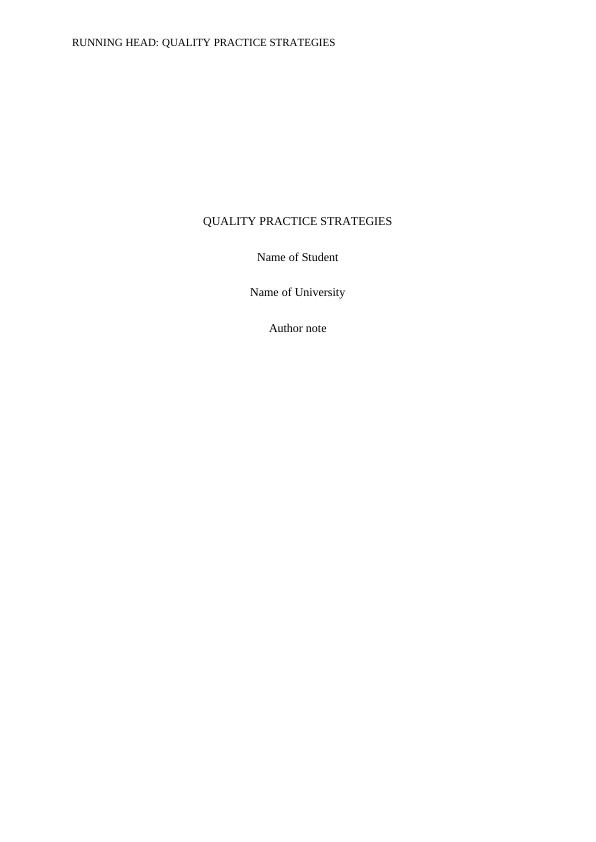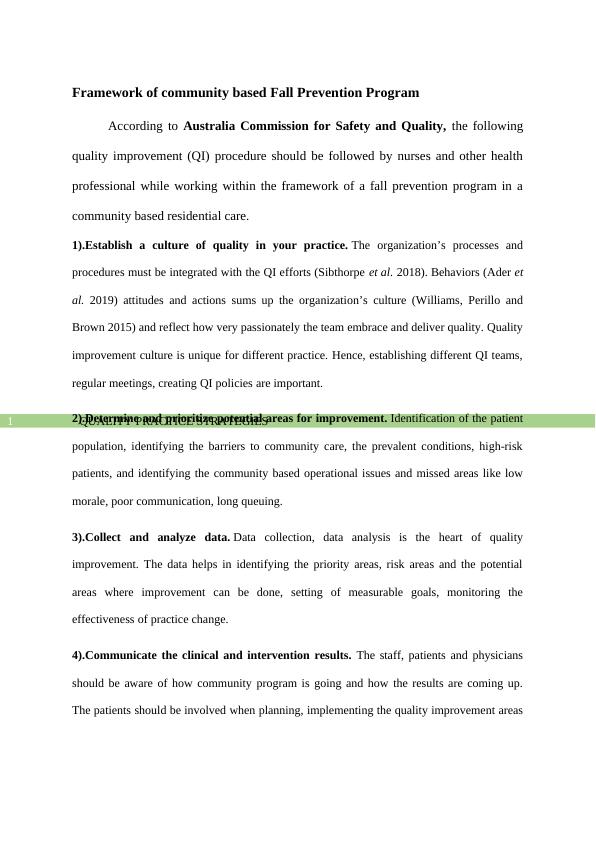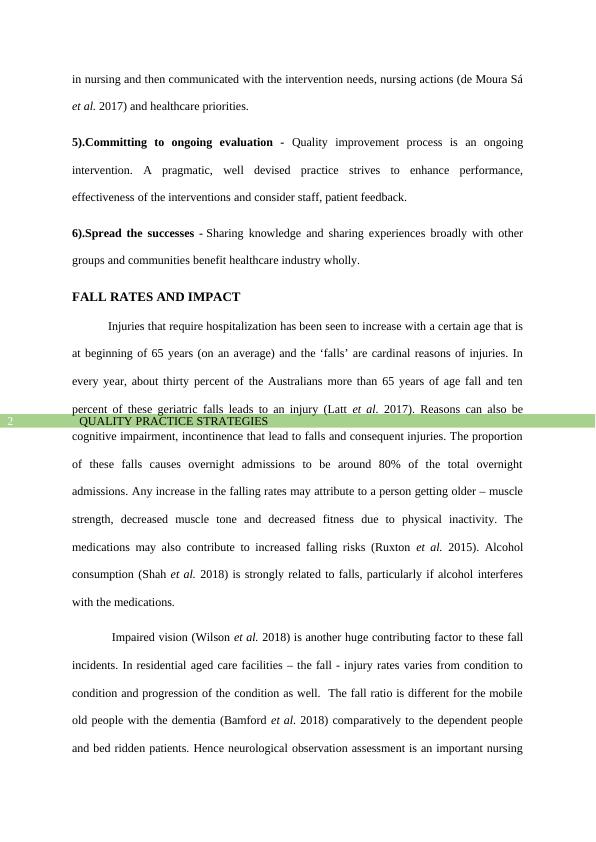Framework of community based Fall Prevention Program
To gain an understanding of the 10 national safety and quality health service standards (NSHQS), their structure, and implementation.
10 Pages2371 Words85 Views
Added on 2023-01-12
About This Document
This article discusses the framework of a community-based fall prevention program in a residential care setting, including strategies for quality improvement, data analysis, and communication of results. It also explores the risk factors and injury prevention strategies associated with falls in older adults.
Framework of community based Fall Prevention Program
To gain an understanding of the 10 national safety and quality health service standards (NSHQS), their structure, and implementation.
Added on 2023-01-12
ShareRelated Documents
End of preview
Want to access all the pages? Upload your documents or become a member.
Opportunities of Quality improvement Project
|4
|819
|15
Importance of Nursing-Sensitive Quality Indicators
|11
|795
|93
Nursing Case Study Report Analysis
|11
|3287
|17
Clinical Practice Improvement Project Report - Assignment
|12
|2430
|36
Leadership in Nursing
|12
|3516
|31
RN Collaborative Healthcare United States PowerPoint Presentation 2022
|11
|945
|19



